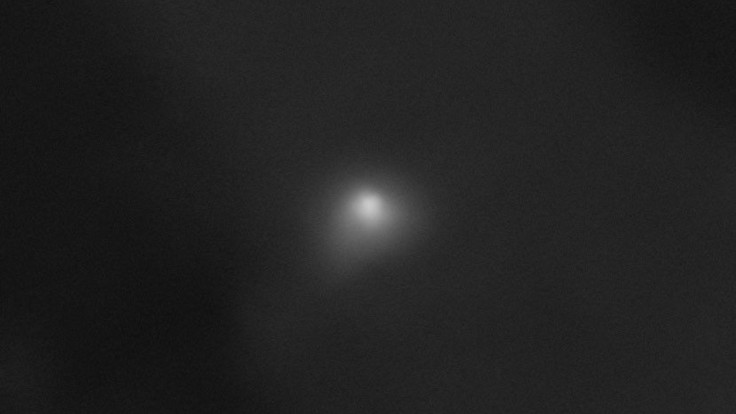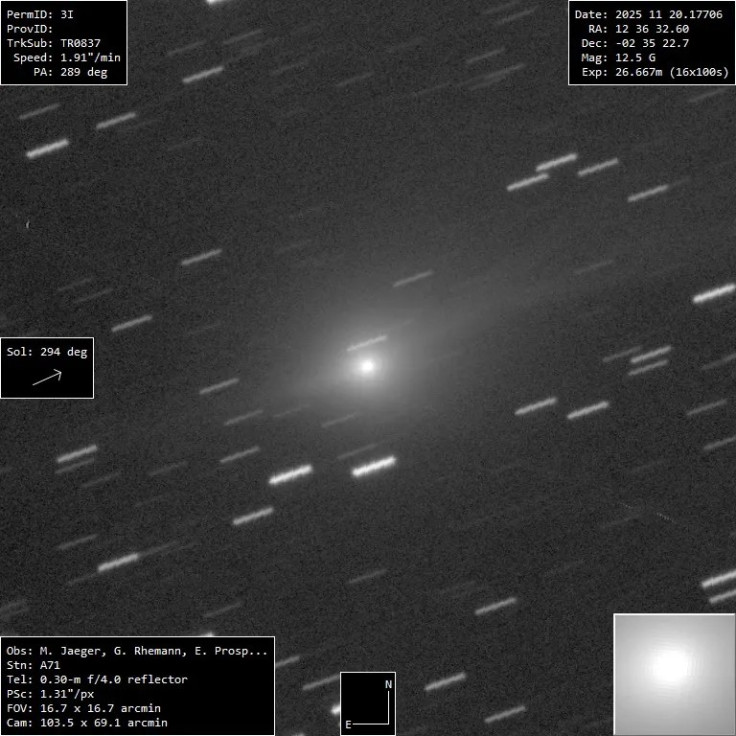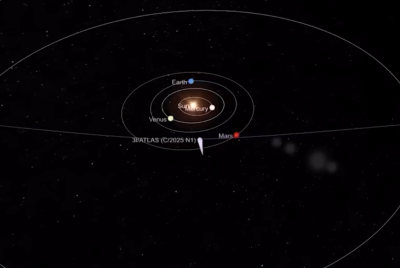Forensic Analysis Exposes 3I/ATLAS Features No Comet Has Ever Displayed
Forensic analysis of 3I/ATLAS reveals a clockwise spin and linear jets that defy known comet physics.

The deep cosmos is often viewed as a realm of chaotic beauty, yet occasionally, a signal breaks through the static that defies the established order of nature. The latest visual evidence emerging from the study of the interstellar interloper known as 3I/ATLAS has shifted the conversation from mere observation to a baffling forensic reality.
Through rigorous image enhancement, what initially appeared to be a standard cometary body has revealed internal mechanics that simply should not exist in standard astrophysical models.
A new analysis of footage captured by Ray's Astrophotography strips away the blur of distance to expose a structure of unnerving mathematical precision. This footage has been subject to intense scrutiny because 3I/ATLAS is only the third confirmed object in history to traverse our solar system from deep interstellar space, following 'Oumuamua in 2017 and 2I/Borisov in 2019.
To understand the true nature of this object, we conducted a full forensic analysis using high-contrast extraction, channel isolation, wave-pattern mapping, and edge detection. By stripping away the colour data to examine the structure in stark black-and-white, we uncovered features that were invisible in the original footage.
It is crucial to note that these features are 'measurable, repeatable, and present in the raw pixel values of the file,' confirming that they are not digital artefacts or glitches introduced by compression. What we are seeing is genuinely encoded in the image itself.

The Clockwise Spin Found Within 3I/ATLAS
The most jarring discovery lies at the very heart of the object. When the brightness curve is flattened, a distinct luminosity clustering reveals a rotating 'spin wave' pattern that moves clockwise. This is not the random noise of space.
It displays 'curvature continuity, symmetric density gradients, and a repeating spiral that maintains its form across multiple luminosity thresholds.'
While this confirms the clockwise structure identified previously, the enhanced data brings it into a much sharper definition that challenges natural explanations.
In natural comets, the sublimation of ice creates a 'coma'—a fuzzy envelope of gas that expands outward in all directions like a chaotic cloud. It does not concentrate into a tightly wound rotational spiral. Yet here, the pattern is consistent with specific rotation rather than simple outgassing.

Anomalous Linear Emissions of 3I/ATLAS
Equally significant is the presence of two opposing linear emissions positioned above and below the central mass. When isolated through green-channel extraction and inverse contrast mapping, these features retain a rigid, straight-line geometry. Under normal solar conditions, the solar wind (a stream of charged particles from the Sun) pushes against cometary gas, causing jets to bend or sweep back into a curved tail.
These, however, maintain 'rigid axial alignment'. They neither arc nor diffuse. They maintain 'constant thickness, uniform brightness along their length, and precise angular opposition', traits extremely unusual for natural cometary activity. Whether composed of gas, dust, or a mixture of both, this linearity is highly anomalous.
3I/ATLAS and the Distinct Optical Shell
The glowing green head of the object also survives the forensic process. The green channel—typically the channel least affected by optical aberrations—shows a compact luminous head with a sharply defined perimeter, surrounded by a darker external halo. The halo does not fade smoothly like a coma; instead, it forms a distinct boundary, almost like a shell.
This type of edge separation is rare in typical comet imaging and suggests 'either unusually dense particulate concentration or an optical signature not well-matched to ordinary comet behaviour'. Standard comets usually exhibit a 'diffuse' edge where gas density slowly drops off, whereas this sharp delineation implies a physical containment or a distinct material boundary.

Rotational Velocity and the 3I/ATLAS Mystery
Velocity analysis from streak length suggests rapid angular displacement during the exposure interval. Even though we cannot determine absolute speed without the exposure metadata, the smeared fringes around the core indicate measurable rotational motion during the shot. Combined with the clockwise spiral, this implies a cohesive rotational system rather than random dust turbulence.
Importantly, every anomaly described above is visible through objective, measurable image features. The clockwise spin wave is visible through phase-contrast layering. The axial jets survive edge detection and do not collapse under channel separation.
The luminous green head and dark halo remain intact during RGB isolation. And the shape symmetry persists even after brightness normalization. Nothing in the forensic process produced these effects artificially. They are present in the original raw pixel data.

These attributes—'rotational wave structure, rigid opposing linear outflows, color-channel stability, and a sharply bounded halo'—continue to set 3I/ATLAS apart from every interstellar object ever recorded.
Even though we cannot conclude what mechanism generates these patterns, the data from this latest image deepens the scientific puzzle. Natural or artificial, inert or active, the object is behaving in ways that 'challenge every known model of comet morphology.'
As new images are captured in the days ahead, additional forensic passes may reveal whether this rotational pattern is accelerating, stabilizing, or transforming.
For now, what we can say with certainty is that this image provides the clearest structural evidence yet that 3I/ATLAS is operating far outside the norms of comet behaviour—and that its internal dynamics continue to defy standard astrophysical expectations. Further forensic work is underway, and we will 'continue monitoring' every incoming image in real time.
As the forensic data accumulates, the classification of 3I/ATLAS becomes increasingly difficult to reconcile with standard cometary models. Whether this object represents a rare natural outlier or a phenomenon entirely new to science, the implications for our understanding of the cosmos are profound.
© Copyright IBTimes 2025. All rights reserved.





















